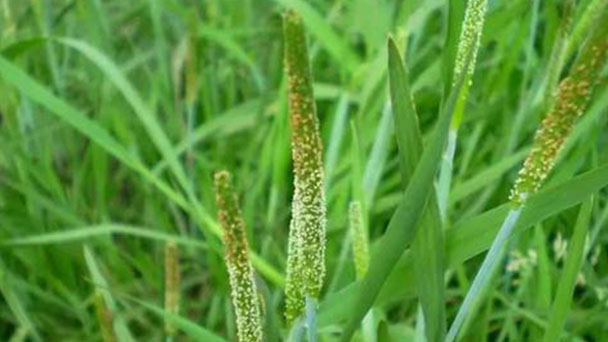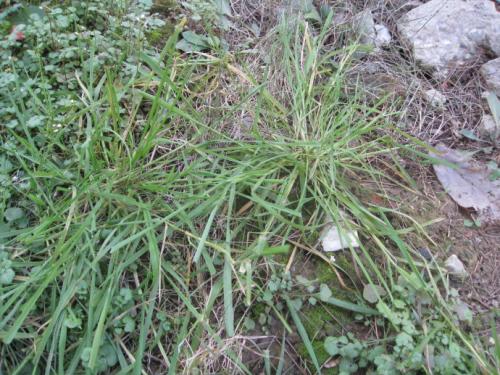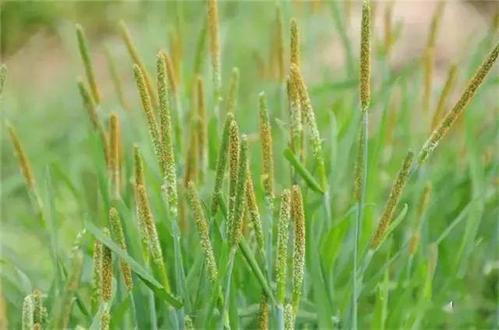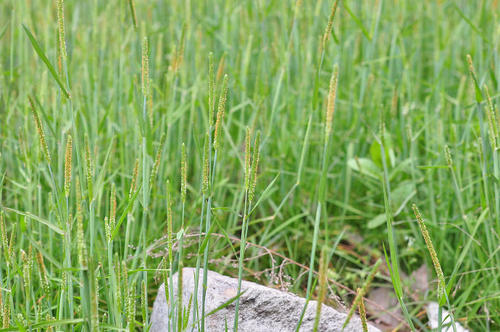Alopecurus aequalis (shortawn foxtail) profile
Written by Maggie
Mar 25 2021

Alopecurus aequalis (also called shortawn foxtail or orange foxtail) is an annual herb that blossoms and bears fruit from spring to summer each year. Alopecurus aequalis has the effect of dampness detumescence, heat clearing and detoxification.
Alopecurus aequalis picture

Morphological characteristics of Alopecurus aequalis
Appearance
Alopecurus aequalis is an annual herb. Culms a few fascicular, thin, smooth, nodal often knee bend, 15-40 cm high.
Leaf
The leaf sheaths of Alopecurus aequalis are smooth and shorter than internodes. Ligule is membranous, 2-5 mm long; Leaves are flattened, 3-10 cm long and 2-6 mm wide.
Flowers & fruit
Alopecurus aequalis is a panicle terete, grayish-green, 2 -- 7 cm long and 3 -- 6 mm wide; Spikelets are elliptic or ovate-oblong, 2-3 mm long; Glume is membranous, the base is interconnected, with 3 veins, fine cilia on the ridge, short hairs on the lower part of the lateral veins; Lemma is membranous, apex obtuse, equal to or slightly longer than glume, lower margin connate, awns 1.5 -- 3.5 mm long, protruding about lower 1/4 of the lemma, concealed or slightly exserted; Anthers are orange, 0.5-0.8 mm long. Caryopsis ca. is 1 mm.
Ecological habits of Alopecurus aequalis
Alopecurus aequalis can be used for a long time. It does not have reproductive branches in the first year after sowing and reaches full development in the third year. It is suitable for planting in permanent pasture.
Alopecurus aequalis likes cold, wet climates and is not tolerant of drought and heat. It grows well in the area with annual rainfall of 1200-1300mm, and has strong cold resistance and frost resistance. Germinate early in spring and can still be used in late autumn. alopecurus aequalis likes moist and organic content of clay loam, clay. Acidic soil, salt dissolved soil growth is poor.

Cultivation of Alopecurus aequalis
The seed is small, the soil should be carefully prepared before sowing, spring and autumn sowing, the sowing amount is 22.5 ~ 30kg/hm2, the soil depth is 2 ~ 3cm.Harvesting grass should be cut in the heading stage or early flowering, too late, stem and leaves coarse old, quality decline. Seeds are patchy and easy to fall off. It is best to harvest when the upper seeds of the first heading are about to fall off.
The distribution of Alopecurus aequalis
Alopesurus aequalis is distributed in eastern and central China and Yunnan, Sichuan, Shaanxi, Henan and Hebei provinces.
How to control Alopecurus aequalis
The control grass lawns include Bermuda (Dogroot series), Zyzia grass series and Alopesurus aequalis in Poa pratensis. Before the bud, 0.0114 g/m 2 of Caochaining No. 1 can be used and 80 ~ 120 ml/m 2 of water can be added. Water once after spraying, and water thoroughly. Alopecurus aequalis 2 ~ 4 leaves, "using Caoquning No.50 0.15ml/m 2, adding 55-60ml/m water., spray, you can also use Caowning 1 0.0114 g/m 2+ Caowning 75 0.3 g/m 2, add 55-60 ml/m 2 water, spray on weeds. When Alopecurus aequalis is over the 5-leaf stage, use Caolin 50 0.15 ml/m 2 every 4 to 21 days, and spray repeatedly. Alopecurus aequalis was controlled by spraying Caowning 40 0.3N0.33ml/m 2 with water 45-55ml/m 2 during the weed 2-6 leaf stage. The dosage of Alopecurus aequalis should be increased appropriately after the 5-leaf stage.
Alopecurus aequalisuse uses
Alopecurus aequalis has medium grass yield, abundant leaves, good grass quality and high protein content. Alopecurus aequalis is suitable for cutting hay, horses, cattle like food. The intake of cotton and goats was poor. It can be used for grazing in the long - term grassland.

Latest Updated
- Benefits of Bugleweed - 7 Science-backed Health Benefits
- Bugleweed Dangers & Side Effects - Is It Poisonous?
- How to Plant Evergreen Trees - What You Should Know
- When to Plant Evergreens - Grow Guide for Evergreen Trees
- 12 Wonderful Evergreen Shrubs for Your Garden
- 12 Popular Evergreen Plants with Pictures for Beginners
- When And How To Prune A Lilac Bush Like a Pro
- How to Grow & Care for Lilac Vine (Hardenbergia Violacea)
- Japanese Lilac Tree (Syringa Reticulata) Care & Propagation Guide
- Shumard Oak Pros and Cons - What to Know
Popular Articles
- Winter maintenance of Antirrhinum Majus
- How to Grow Terminalia Mantaly Tree
- How to Grow and Care for Crossostephium Chinense
- How to grow Antirrhinum Majus in spring
- Peristeria Elata (Dove Orchid) Profile: Info & Care Guide
- Underwatered Snake Plant (Sansevieria Trifasciata) - Signs And How To Fix
- How to Care for Brazilian Jasmine Plant (Mandevilla Sanderi)
- How to Grow & Care for Graptopetalum Purple Delight in Summer
- Rosa Chinensis (China Rose): Plant Growing & Care Tips
- How to Care for Baby Sun Rose (Aptenia Cordifolia)